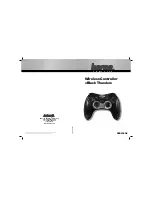
Omega Model CYD211 User’s Manual
4-2 Remote
Operation
Physical Connection (Continued)
The letters DTE near the interface connector stand for Data Terminal
Equipment and indicate the pin connection of the directional pins such as
transmit data (TD) and receive data (RD). Equipment with Data
Communications Equipment (DCE) wiring can be connected to the
instrument with a straight through cable. As an example, pin 3 of the DTE
connector holds the transmit line and pin 3 of the DCE connector holds the
receive line so the functions complement.
It is likely both pieces of equipment are wired in the DTE configuration. In
this case pin 3 on one DTE connector (used for transmit) must be wired to
pin 2 on the other (used for receive). Cables that swap the complementing
lines are called null modem cables and must be used between two DTE
wired devices. Null modem adapters are also available for use with straight
through cables. Paragraph 5.6.1 illustrates suggested cables that can be used
between the instrument and common computers.
The instrument uses drivers to generate the transmission voltage levels
required by the RS-232C standard. These voltages are considered safe under
normal operating conditions because of their relatively low voltage and
current limits. The drivers are designed to work with cables up to 50 feet in
length.
4.1.2 Hardware
Support
The Model CYD211 interface hardware supports the following features.
Asynchronous timing is used for the individual bit data within a character.
This timing requires start and stop bits as part of each character so the
transmitter and receiver can resynchronized between each character. Half
duplex transmission allows the instrument to be either a transmitter or a
receiver of data but not at the same time. The serial output supports a
communication speed of 9600 baud.
Hardware handshaking is not supported by the instrument. Handshaking is
often used to guarantee that data message strings do not collide and that no
data is transmitted before the receiver is ready. In this instrument
appropriate software timing substitutes for hardware handshaking. User
programs must take full responsibility for flow control and timing as
described in Paragraph 4.1.5.
















































